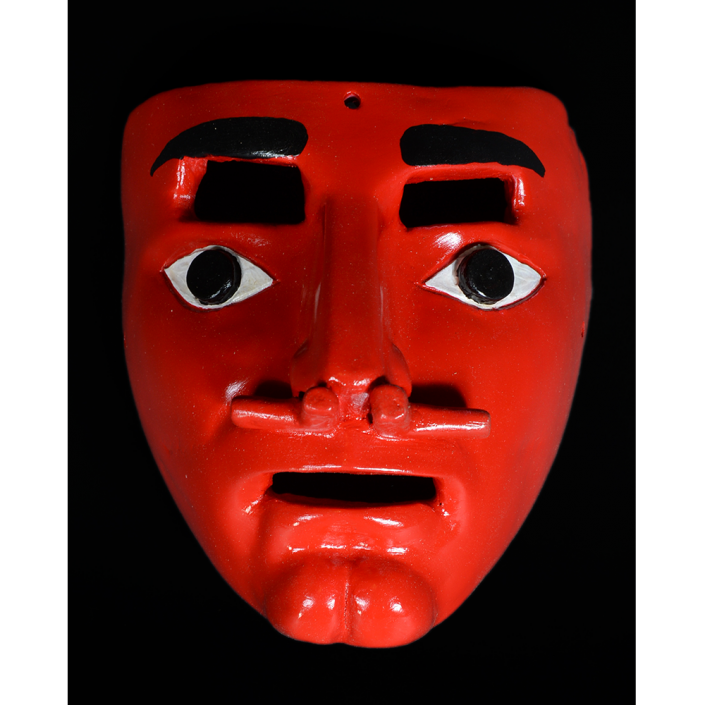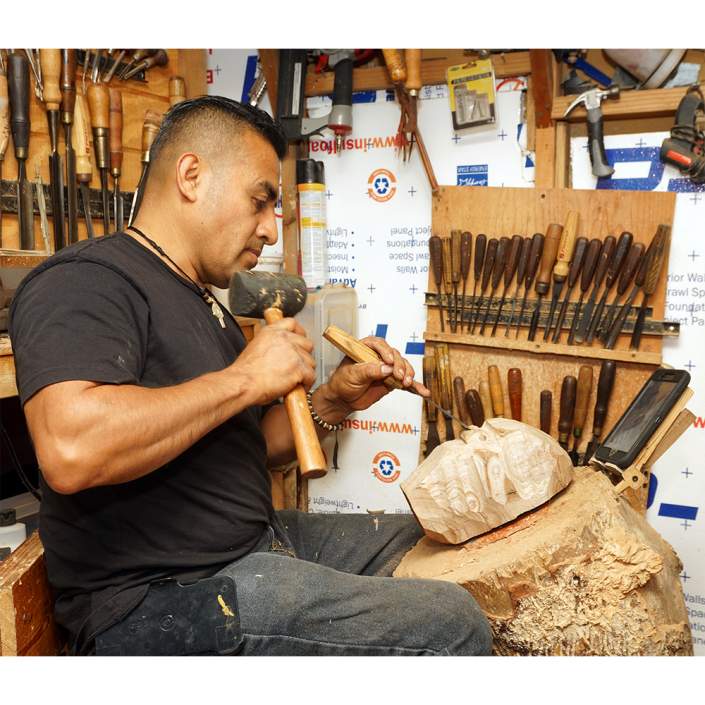TITLE: Chilolo Pilato Mask
TYPE: face mask
GENERAL REGION: Latin America
COUNTRY: Mexico
SUBREGION: Oaxaca
ETHNICITY: Mixtec
DESCRIPTION: Pilato Mask
CATALOG ID: LAMX084
MAKER: Luís Morales Ortíz, San Miguel Tlacotepec (1974- )
CEREMONY: Carnival (Danza de los Chilolos)
AGE: 2021
MAIN MATERIAL: avocado wood
OTHER MATERIALS: acrylic paint
The Danza de los Chilolos is performed by the Mixtec people of Juxtlahuaca district and surrounding towns during Carnival or on special occasions, such as the inauguration of a church. The word “chilolo” is a Spanish version of the Mixtec term Lolo Nchicaa, meaning Ritual of the Jaguar. As the name suggests, this dance originates before the Spanish invasion and is one of the oldest still danced in Oaxaca.
It is based on a legend of a great chief of Yosocuia who had amassed a large fortune, but who decided the leave the village in the care of his sons. He went to Tututepec, married a noblewoman, and started a new family, but he longed for his old kingdom. His wife wished him to remain and, on the advice of a priest, sought the help of a mystical creature, the Nahual. The Nahual transformed itself into a jaguar and slaughtered all the cattle of the chief’s sons, so that when he arrived back in Yosocuia, he saw nothing but poverty. He decides to hunt the jaguar, taking with him his best guerreros del sol (Warriors of the Sun), also called Pilatos, who wear this mask. The chief is represented by a character known as Santiaguito.
The Danza de los Chilolos is accompanied by a small orchestra of a Mixtec small, square drum and stick (tamborcito) made from goat hide, and a simple reed flute. The chilolos perform choreographed steps, wearing elaborate costumes and colorful feathered crowns made of wood and adorned with mirrors. They wear bells on their boots that shake as they dance, and carry a sword in one hand and a flag in the other. Much of the symbolism of the dance relates to Catholicism, because Spanish missionaries did not tolerate pre-Christian traditions and compelled the Mixtecs to corrupt their culture with Catholic doctrines.
Normally, masks of this region are made of sabino wood (Mexican cypress), but other woods (such as avocado, in this case) may substitute when the sabino is unavailable.



















